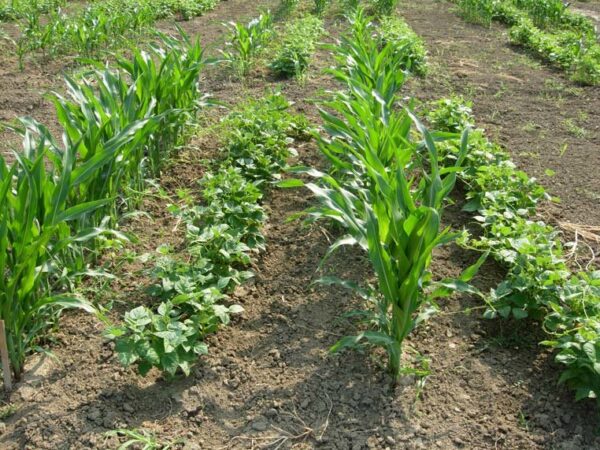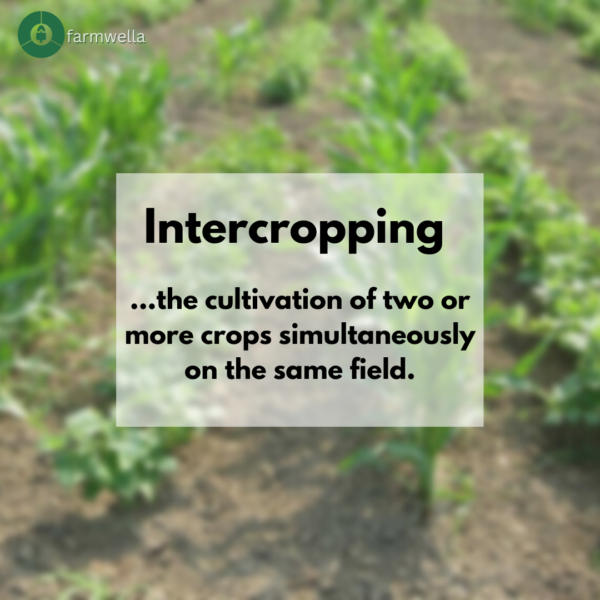
Farmers are always on the lookout for new ways to improve their efficiency and productivity. And the reason behind this is pretty straightforward: with the growing global population, the demand for food is on the rise. Plus, let’s not forget that higher crop yields translate to higher profits, and who doesn’t want to make more money?
This puts a lot of pressure on farmers to find innovative ways to produce more crops.
Luckily, intercropping, or mixed cropping, is a technique that can help farmers increase their yields. In this article, we’ll outline and explain how intercropping can be used to improve crop productivity on your farm.
But first, why intercropping? Before we dive into the article, let’s first explore why intercropping is a strategy that farmers adopt to boost their crop yield.
Why Farmers are Adopting Intercropping To Increase Their Crop Yield
- Efficient Use of Land
The practice of intercropping enables farmers to utilize their land more efficiently by growing multiple crops simultaneously, thereby increasing their overall yield potential.
- Minimized Level of Crop Failure
Intercropping can mitigate the risk of crop failure by providing a safety net – if one crop fails, the others may still yield, distributing the risk and reducing the overall probability of crop failure.
- Effective Pest and Disease Management
Intercropping is a practical method for pest and disease management since it reduces the concentration of any one crop in a specific area, making it harder for pests and diseases to spread and minimizing their detrimental impact on the crops.
A Guide to Enhancing Farm Productivity through Intercropping

We’ve previously discussed why farmers are increasingly interested in intercropping to improve their farm yields. Now, let’s explore the practical steps involved in achieving this. We will highlight five actionable steps that farmers can take to successfully implement intercropping and increase their farm yields.
Let’s get right into that.
1. Choose the Right and Compatible Crops
The first step in intercropping is selecting the right crops that do not compete for resources but complement each other. This involves choosing crops with complementary growth patterns, nutrient requirements, and water needs.
For instance, farmers can intercrop tomatoes with amaranth, which is a grain crop that grows well alongside tomatoes without competing for space or water. In addition, amaranth can help repel insects, reducing the need for pesticides.
By selecting complementary crops, farmers can increase their yields and reduce the risks of crop failure, making intercropping a valuable farming tool.
2. Plan and Design Your Crop Arrangement
The second step is to plan your planting to ensure optimal productivity. Farmers need to decide the right amount of crops to plant. The crops should also be spaced evenly to prevent overcrowding. This ensures adequate resources for each crop to grow.
Additionally, farmers should consider the timing of their planting to prevent fast-growing crops from overshadowing slow-growing crops. By carefully planning your planting, the risks associated with uneven growth can be optimized.
It’s also important to plan the planting layout based on the needs of each crop. For instance, taller plants can offer shade for shorter plants, and ground-cover plants can suppress weeds and retain moisture in the soil.
3. Effectively Manage Nutrient Requirements
One of the most critical steps in intercropping is managing the nutrient requirements of different crops. Each crop has unique nutrient needs, and farmers must ensure that they receive the proper nutrients to grow successfully. Failure to do so may lead to stunted growth, poor yields, and crop failure. The following are ways you can manage nutrients effectively
One way to manage nutrient requirements in intercropping is by utilizing leguminous plants like tamarind, beans, and clover. These plants can fix nitrogen from the air, reducing the need for synthetic fertilizers.
Furthermore, leguminous plants are also excellent soil improvers, as they enrich the soil with organic matter and beneficial microorganisms.
- Another way to provide nutrients for intercropped plants is by using organic mulch like straw or leaves. Mulching helps to retain soil moisture, suppress weeds, and enhance soil fertility. Organic mulch also gradually releases essential nutrients as it decomposes, providing a steady supply of nutrients to the crops.
By managing nutrient requirements in intercropping, farmers can optimize their yields, improve soil fertility, and minimize the risks of nutrient deficiencies.
4. Control Pests and Diseases
The fourth step in intercropping is to effectively manage pests and diseases. Pests and diseases can significantly reduce crop yields and cause financial losses for farmers. Therefore, it’s crucial to control them to achieve successful intercropping.
Effective pest and disease management is crucial for successful intercropping, and farmers must implement appropriate control measures tailored to their specific intercropping systems
Some of the approaches that can be used to control pests and diseases include:
- Use of natural repellents: Intercropping crops that repel or are unattractive to pests can help reduce the need for chemical pesticides. For example, intercropping basil with tomatoes is an effective strategy to protect the plants from pest damage.
- Biological control: Farmers can also use natural pest control methods like biological control, which involves using natural predators or parasites to control pests. Biological control is an environmentally friendly approach to pest control and helps to reduce the use of chemical pesticides.
5. Manage Water Efficiently
Intercropping requires effective and efficient water management because it can lessen the environmental impact of farming by reducing water demand and limiting soil erosion.
Farmers may boost yields and profitability while reducing the risks associated with water scarcity and drought by employing effective water management strategies. There are a few strategies that can be employed for this.
- Drip Irrigation: This delivers water directly to the roots of plants, minimizing water loss through evaporation or runoff. Farmers can also collect rainwater and store it for use during dry periods, or use graywater from household sources to irrigate their crops.
- Mulch: Mulch may be a useful technique for managing water and enhancing the well-being and production of crops. Mulch can help control soil moisture, but to make sure that plants are getting the correct quantity of water, it’s crucial to frequently check the soil’s moisture levels.
In conclusion, a good yield may only be achieved through intercropping if you take the necessary steps. You do not want to skip any of the previously listed essential steps. Following the instructions will undoubtedly assist you in achieving the desired level of productivity.
You should be aware that there are numerous techniques one may use to maximize the potential of their farm; all you need to do is pay attention to what works for you.
